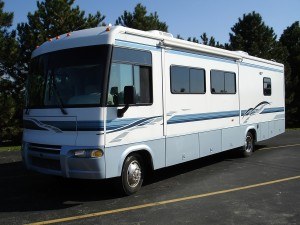First party insurance claims involving recreational vehicles (RV) can often be traced to driver inexperience and forgetfulness.
“The majority of claims occur within the first 90 days of ownership or at the beginning of the season,” according to International Insurance Group, Inc., an Arizona independent agency that places RV insurance. “This is due to the nuances and size of RVs. Most drivers aren’t accustomed to the wide angles, required clearance and space required to maneuver their rig.”
Gradually, as RV drivers gain experience, the claims associated with RVs change. Lenny Richileau, director of the specialty vehicle claims unit for Allied and Nationwide Insurance Companies calls them the “I forgot” claims.
“Experience does not eliminate claims, but it seems to change the nature of the claim. With experience, claims are less about hitting the post at the gas station, taking out the top of the rig, trying to fit under an underpass with low clearance and become what we call the ‘I forgot’ claims,” the agency stated.
RV owners tend to be in a hurry, leaving parts open and jacks down, Richileau said.
Other “I forgot” claims include not unhooking the utility and plumbing connections and not locking the awning.
According to the agency, while the claims may not be catastrophic, they can exceed the deductible and increase insurance rates.
Richileau used to see RV owners start out small, working their way up to larger vehicles; however, that’s changed in recent years. He now regularly sees a new RV owner jump into a 38 to 40 foot RV full-time.
Because no special license is required, anyone can purchase a 40 foot diesel RV and drive it off the lot, he said.
Richileau said new RV owners often cause damage to street lights and posts because they are unaware of the limited turning radius associated with driving such a large vehicle.
He said adjusters unfamiliar with handling RV claims need to recognize that the vehicles are unique.
“They’re really a combination vehicle…a moving house. In general, a large RV has all the amenities you’d expect in a house, washers, dryers, big screen TV’s; all made in a package that’s designed to go down the road at highway speeds,” the claims director said.
Adjusters should be aware that the time it takes to repair an RV will be considerably longer than an average vehicle, Richileau said. Because of the extended time to repair, the company offers a policy with built-in additional living expenses (ALE) for full time RV’rs. Rental RVs are also available.
In addition, there are substantial differences in estimating RV damage, Richileau said. While there are several types of estimating software for autos, RV estimating tools are not as sophisticated. As a result, adjusters have to be knowledgeable in the materials associated with the manufacture of an RV. For instance, door materials in an RV are fiberglass and typically obtained through the manufacturer directly.
Was this article valuable?
Here are more articles you may enjoy.


 Verisk Webinar Highlights Emerging Psychoactive Substance Risks
Verisk Webinar Highlights Emerging Psychoactive Substance Risks  Trump Says He’s Doubling Tariffs on Canadian Steel, Aluminum
Trump Says He’s Doubling Tariffs on Canadian Steel, Aluminum  Canadian Auto Parts Stocks Thrown Into a Tailspin by Tariff Woes
Canadian Auto Parts Stocks Thrown Into a Tailspin by Tariff Woes  Bayer Weighs Billions in Capital Raise for Lawsuits, Shares Tumble
Bayer Weighs Billions in Capital Raise for Lawsuits, Shares Tumble 